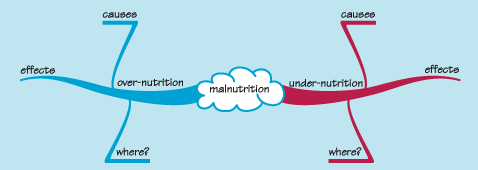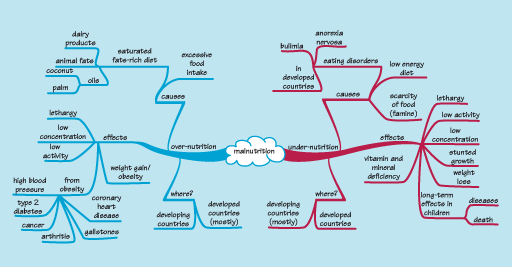5.2 Using a mind map
If you prefer to create a visual representation of the key ideas contained in the texts you read, you can use a mind map. A mind map is a diagram showing a key idea and other associated ideas and information. The key idea is at the centre of the diagram and the other concepts stem from it.
Activity 14
Below is a mind map whose branches show the main topics dealt with by the 'Improving health and wellbeing' text. As you can see, there are two main branches that relate to the two main topics: over-nutrition and under-nutrition. From each of these branches stem three sub-branches that relate to the three main subtopics: causes, effects and location.
Download [Tip: hold Ctrl and click a link to open it in a new tab. (Hide tip)] a PDF of this mind map then print it out. Populate this mind map by adding more branches to the three sub-branches. You can reuse the same words used in the answer to Activity 13 or your own words. However, as space is limited, you will need to be very concise and you may want to omit some less essential information.
When you have finished, compare your mind map with mine.
Answer
Some people find diagrammatic representations, such as mind maps, can be more memorable, particularly when revising for exams. However, due to lack of space, it is not always possible to enter every detail in a mind map. For example, my mind map does not contain details about type 2 diabetes. I left it out because space was limited and I felt that this detail was not essential.


